A pristine sheet of green stretching across your backyard, the grass lawn is a staple in the British garden. It is a place to host parties and allow children to play safely. However, if you’re someone who wants a unique take on the garden, there are a wealth of options available to create an alternative lawn. With garden landscapes evolving and expanding, alternatives like wildflower turf, clover lawns and even large bark flower beds are being introduced instead of the classic grass lawn.
If you want to switch up your garden design without the hefty landscaping fees, then Turfonline is here to help. From wildflowers to wood chips, these are the most popular alternatives to grass lawns.
What Can You Use Instead of Grass?
When looking for an alternative to homegrown or turf lawns, the responsible householder looks at more than just aesthetics. The joy of natural grass is that it works with nature to help us in loads of ways. From soaking up rainwater, absorbing CO2 and releasing oxygen to cooling the atmosphere on hot days and filtering dust and pollutants from the air.
It’s plain to see why grass lawns are so favoured. But what about the alternatives?
Wildflower Matting Maximises Wildlife
One of the biggest gripes of lawn owners is the need for regular maintenance. Mowing the lawn four times every month at its peak can be a drag, not to mention the edging you need to do to make the paths look presentable. Wildflower matting significantly reduces maintenance while staying gorgeous.
A typical wildflower lawn is designed to grow long while offering all the practical benefits of a grass lawn and is cut only once or twice per year. You will see a lot more wildlife when you use wildflowers as a natural alternative to a grass lawn – if you are keen on photography or painting, you’ll have plenty more subjects!
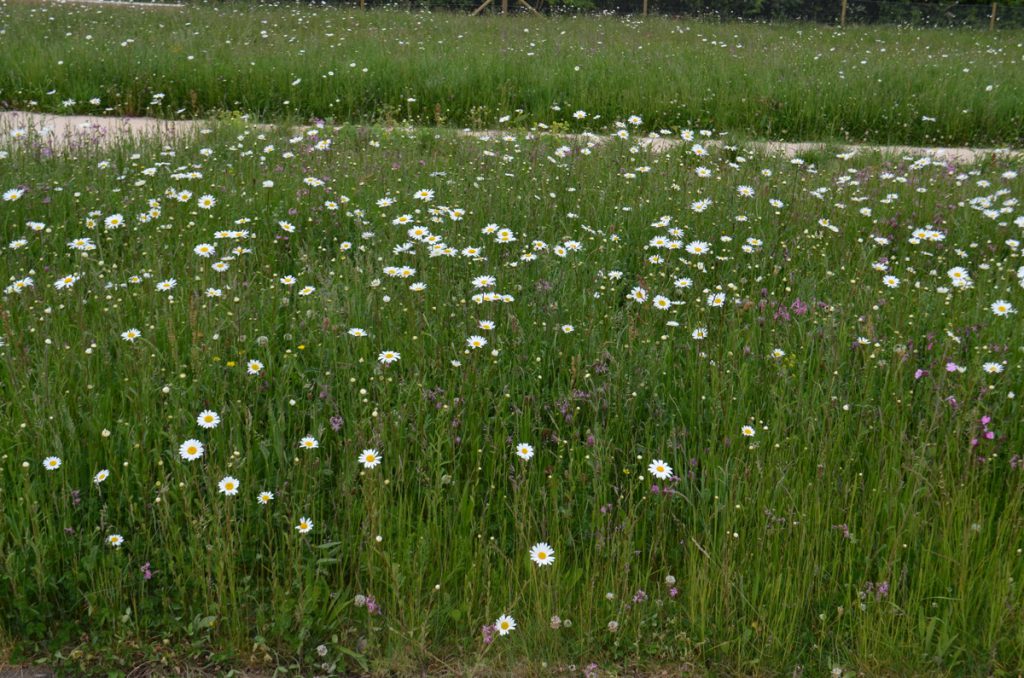
A wildflower area brings colour and interest to a garden and makes for great alternative lawns
The big difference, however, is creating a more colourful, untamed look to your garden. If you opt for a wildflower lawn and wish for a more manicured look, you could mow paths through it or ask a garden designer to help you combine wildflowers with hard landscaping and planters for a contemporary look and feel.
Find out more about wildflower turf here.
How Sedum Matting Makes Lawns Low-Maintenance
Sedum matting is a bit of a curveball in the shortlist of grass lawn alternatives. Sedum plants are far more drought-tolerant than lawn grasses and they’ll delight you all year round. These low-growing plants have a fascinating texture to them and are very kind to the environment as well as being a magnet for pollinating insects.
The only disadvantage with a sedum lawn is that it is not very hard-wearing. Sedums won’t tolerate frequent foot traffic, so a lawn would no longer be suitable as a children’s play area.
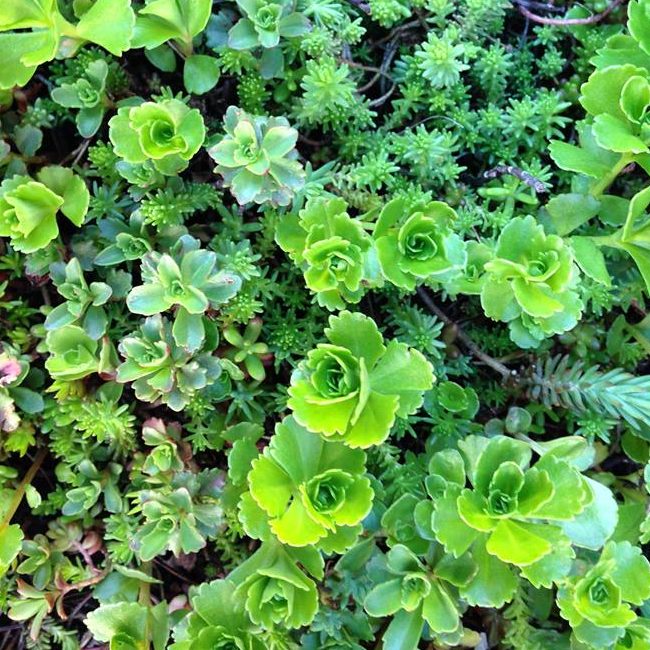
Sedum is a versatile plant that can grow in many locales and has brilliant potential as a grass alternative for a front garden or even a sloping garden. Enviromat sedum matting was developed for use on green roofs because of its incredible self-sufficiency. Maintenance consists of no more than applying a feed once a year and clearing away autumn leaves, and there is no mowing and no clippings to dispose of.
Learn more about sedum matting for ground use here.
Using Bark or Woodchip as Ground Cover
We’ve covered a few plants you have to water and nurture, but what is the best non-green ground cover to replace grass? A bark mulch or woodchip surface not only drains well, nourishes soil microbes and appeals to a wide range of minibeasts, but it makes for a practical play surface for children and pets when used as groundcover. There’s a reason they are used for public playgrounds!
Maintenance for bark flower beds or bark lawns is very different to grass alternatives, and we mean that in the best way. You can ditch the lawn mower entirely, saving you tonnes of space no doubt. To keep it in top shape, simply use a weed control membrane beneath it and be prepared to pluck out an occasional opportunist plant here and there. The bark mulch will probably need topping up every 3-4 years, but that’s far less work than mowing the lawn once a week.
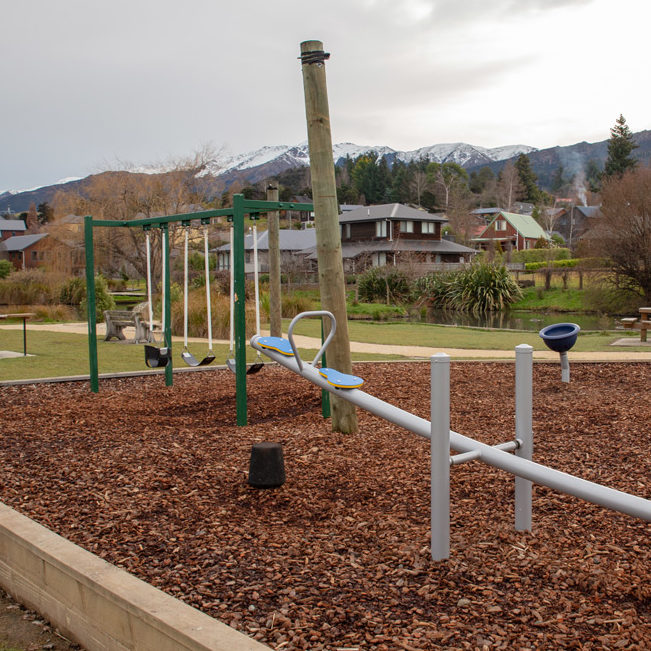
Fed up with muddy kids? Woodchip makes a great play surface – and you won’t need to negotiate your way around toys with the lawn mower!
Buy weed control membrane here.
Find out about bark mulch prices here.
Related Information
Find tips on designing a lower-maintenance garden here.
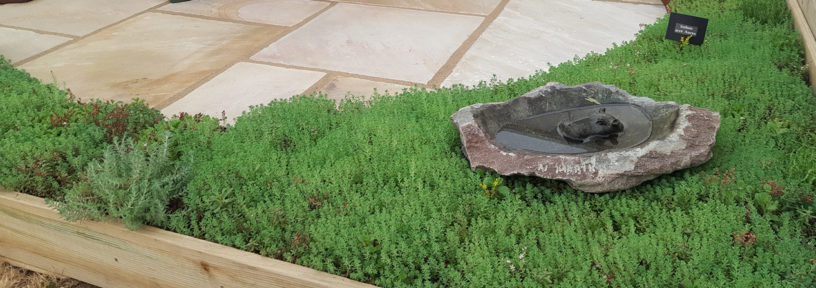
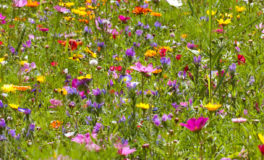 Meadowmat Species
Meadowmat Species 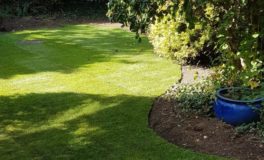 Buying turf for shaded areas
Buying turf for shaded areas 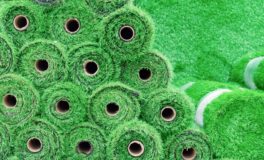 The debate over artificial lawns & wildlife
The debate over artificial lawns & wildlife 

